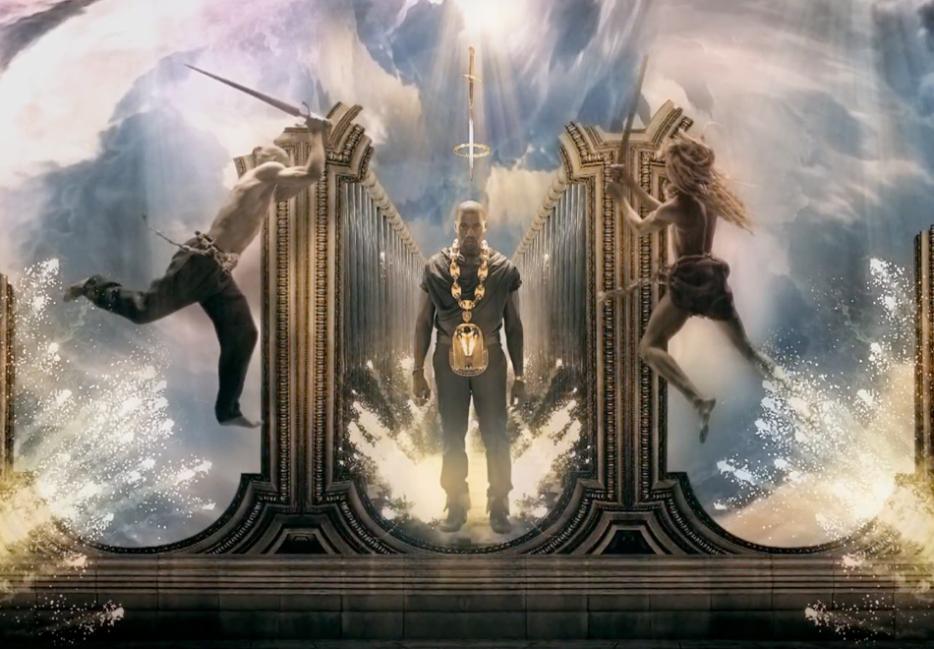Cinema began with an industrial ritual: 46 seconds of workers leaving the Lumière brothers’ factory in Lyon, women playfully tugging at each other’s dresses, a large dog doing what hyperactive dogs have always done, every one nonchalant about their presence at the creation, this blank screen that, in the Scottish writer Gilbert Adair’s words, would bear “the myths, dreams, drives, lies, desires, archetypes, whimsies, crochets, psychic megrims, and occasionally the history, of our century.” Music video announced itself in kitschier terms. After the countdown, the moon-mission imagery, that American flag flashing with MTV neon, the Buggles’ elegy became its inaugural march, elevating them to immortal obscurity.
Their lament for radio stardom’s death wasn’t the first of its kind, but what one takes away from Spectacle, a new exhibit devoted to the form at New York’s Museum of the Moving Image, is that this medium could only emerge as such once communications technology caught up with art. The curators identify numerous precursors—D. A. Pennebaker’s adaptation of Duke Ellington, Paramount Pictures short films featuring performers like Bessie Smith and Cab Calloway, The Girl Can’t Help It and A Hard Day’s Night, those slabs of Gallic camp known as Scopitones—yet none are the “music video” that immediately comes to mind. On day one, MTV VJ Mark Goodman declared “we’ll be doing for TV what FM did for radio,” and by importing radio’s demographic research techniques to the unsurveyed vastness of cable, the predictably anarchic network gathered a mass audience to validate mass culture.
Film itself had undergone a similar evolution, emerging from novelty to art once intensified production took movies beyond penny arcades and traveling shows. Unlike the communal experience of a flickering nickelodeon, however, “I Want My MTV” was an appeal made for the digital era. (Almost no one saw the channel at first—it launched on a single New Jersey cable provider—and they weren’t subscribing in sustainable numbers until Madonna and David Bowie could be convinced to say that new slogan into a camera.) Perhaps overcompensating for this marketing-swaddled infancy, the clips and artifacts in Spectacle skew towards music video’s more recent auteurist period. You’ll find a Lego White Stripe and a googly-eyed milk carton, but not George Michael’s leather jacket. The favoured rapper is definitely Kanye (and “Power” does look unrecognizably good on a gallery wall).
Seeing theatre-sized “Sabotage” or photographs from the “Big Time Sensuality” shoot is a delight, but the limitations of auteur theory, its mandarin indifference to film production’s power hierarchies, become even more glaring outside of its original context. Does “Like a Prayer” belong in the oeuvre of the Mary Lambert who directed it, the Mary it stars, or both? Not everyone gets to be an auteur, either; Hype Williams remains marginal here. Michael Jackson and Prince don’t appear in Spectacle at all, and while the curators can’t be blamed for them denying exhibition rights, a history of popular music missing that pair is a Mount Rushmore with two faces sanded off, especially since they helped integrate pale MTV playlists. New York’s transit museum has a Michael Jackson video! The baffling preponderance of Radiohead only makes each absence seem larger.
Although they probably exacerbate underrepresentation of hip hop, teen pop and country, the exhibition’s loose thematic boundaries—animation, analog craft, and Yo! MTV Raps all receive a mounted television—still make some intuitive sense. There’s a room full of controversial, endorsement-endangering videos, and I lingered in its low red light, staring through peepholes at seminal gangsta rap or quaintly scandalous BDSM. In I Want My MTV, Craig Marks and Rob Tannenbaum’s oral history of the network, “Justify My Love” director Jean-Baptiste Mondino recalls: “The idea was simply that a woman is to be loved emotionally and sexually, at the same time. Most of the time, we think sex is something that is for the man. If a woman admits that she likes sex, we think she’s not a respectable person, which is completely stupid…With Madonna, I learned to be honest, to be clear, and not to lie—which is a big deal for men, because we are liars and cowards.”
“Video Killed the Radio Star” was inspired by a J. G. Ballard story about a mute boy and an opera singer befriending each other in a future where technology has made audible music obsolete. But cultural upheaval is rarely so sudden or sweeping—it only seems that way when you’re caught up in it. If video and then the Internet made music ever less enigmatic, a humbler radio still lives, and song does too. We no longer “lie awake intent on tuning in on you,” yet our fickler passions persist in their desire. Although Spectacle eventually gets around to fan-made homages and YouTube and everything else that makes sitting through hours of TV to see some music video’s debut sound like a Ballardian conceit, I loved watching one of its randomly-anthologized screens with friends, unable to close the window or call up another better clip at whim, unsure whose lip-synched vision might be next. We can’t rewind, we’ve gone too far, but we can remember.






